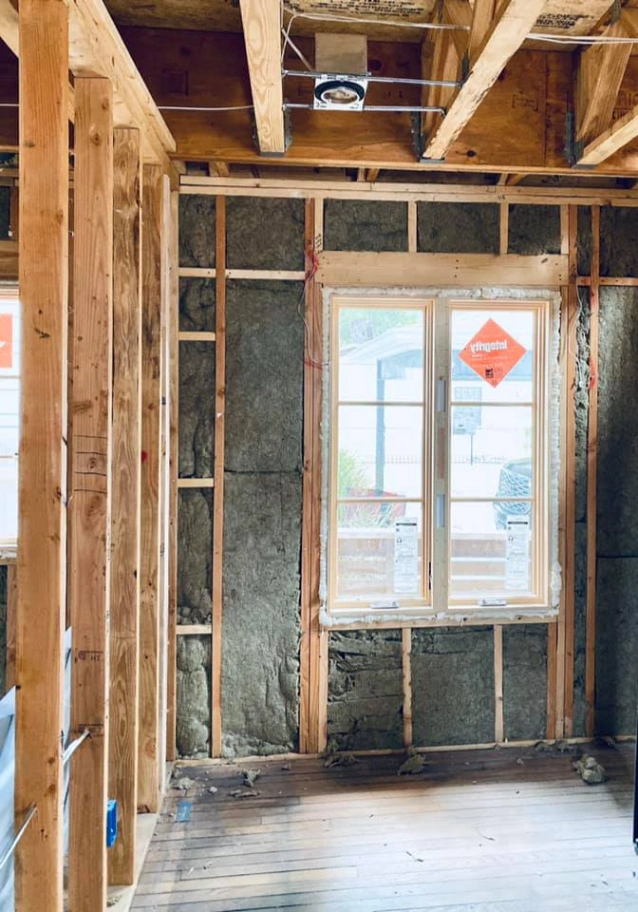At Stellrr Insulation & Spray Foam we meet with over 100 contractors, homeowners, and building owners in the Austin TX area. Many of our prospective clients have educated themselves on our thoughts and beliefs (from this website) on everything about insulation installation. They frequently ask us who are some of the other insulation companies and competitors we have around the Hill Country.
As always, we are big on being transparent, and blatantly honest about our competition. Why? We want our clients to be well informed so they can make the best possible decision.
 Here is a list of some of the insulation companies in Central Texas:
Here is a list of some of the insulation companies in Central Texas:
- Stellrr Insulation & Spray Foam – That is us. You can read all about us here. We are a local Austin TX family owned and operated company. Our focus is on delivering excellent service and products to our clients customized needs. We are the only company around Austin to fully back and guarantee our work.
- Key Insulation – Key was a San Antonio based installer until they were bought by the second largest insulation installer in the country: Installed Building Products (IBP). IBP is a publicly traded NYSE company. Who uses Key Insulation? They focus typically on new home builders who give them large volume contracts.
- Hinkle Insulation – Hinkle was a local company until they too sold out to Installed Building Products, the NYSE company. Hinkle focuses on commercial projects.
- USI Chase Insulation – Chase Insulation has held several names over the years including (Synergy Insulation). Currently they are owned by USI. USI has 46 locations across the United States. Their focus is on large scale projects and contractor business.
- Austin Contractor Services – ACS is another company that sold out to a national company called TrueTeam. TrueTeam recently bought Masco as well. As you may have guessed by their name, ACS focuses on contractor solutions.
- BioTex Foam – Biotex Foam is owned by Dan Amon who used to be a home builder. BioTex is based out of Georgetown TX. Dan only installs spray foam insulation. BioTex uses SES Sucra-seal foam. Just like the foam Stellrr sprays, SES contains fire retardant in the foam. What that means is foam does not burn like “competitor” foams do when a blow torch is held up to them. Dan has a good video made by SucraSeal that is on his website demonstrating this. Stellrr’s foam does the same thing. I think I need to put making a demonstration video on my to do list.
- Best Insulation – Best Insulation is a member of Custom Builder USA (CBUSA), along with Stellrr and Key Insulation. This is a rare honor to be included in the group. Best Insulation is still a locally owned business by Carey (father) and Travis (son) Lafeyette.
- Cool Insulation – Cool serves Austin and San Antonio and is owned by KJ Weinrich. They are a reputable insulation installer.
- Payless Insulation – Payless is a Houston TX owned installer. They focus on selling cellulose and denim insulation. Good products for the recycling focused consumer. Stellrr has cellulose and denim insulation as options. We believe it is our job to educate you, and let you decide which option is best for you.
- ATX Radiant Barrier – Is a website that is run by a lead generation brokerage in Houston. We haven’t actually been able to find any trucks or rigs with the ATX Radiant Barrier name on it. The website may just be a middle man. If you see one of their trucks, or hire them, please send us photo.
- Foam It Now – A San Antonio based company that (accidentally) advertises in Austin. We have had sever clients call FoamIt Now to get service in the Austin area. Unfortunately, they were not able to get service because the job was not big enough. That is reasonable. FoamIt Now does sell a 1.0 pound foam which they promote as an alternative to the typical 0.5 pound open cell foam. Stellrr offers the same no-shave stronger solution. You can learn more in Standard vs Upgraded Foam
- Garland Insulating – Is owned by the Drum family. Ferrell Drum (their Chairman) and I both graduated from Harding University. They are not an Austin based company, but they do serve Austin, Dallas, Houston, San Antonio, and other areas. Garland is probably the oldest family owned insulation company in the area.
- Green Collar Operations – A local company who is owned by Rob Scott. They specialize in retrofit applications and energy audits.
- Attic Dr. – Is a franchise company serving Austin. Attic Dr. also focuses on retrofit applications, particularly in the attic.
- Hill Country Insulation – Is a Pflugerville based insulation company who offers a variety of insulation materials and application methods.
- Critter Ridder – Is a pest control company who offers insulation removal (as does Stellrr).
-
Conservation Specialists of Austin – Is a company owned by Jon Beard. They focus on making buildings more energy efficient. Nice people.
Can’t find the Austin insulation company you’re searching for?
If you are contemplating hiring a insulation company who is NOT on this list, be extra cautious. The contractors above DO have a history and reputation of doing a good job and delivering on their promises.
WARNING: Do you have a quote from a competitor that looks lower than Stellrr’s?
Read the Problem with Insulation Price Quotes. In almost every case where one insulation company is priced different than another one, it is a result of this: Company A quoted you fewer inches (less insulation) than Company B. So you are comparing Apples to Oranges.
If Stellrr is priced higher, it is because we are installing more material than our competitor, tell us.
We will provide a second quote with the same amount of material installed as our competitor provided in their written quote. Then you can compare Apples to Apples. Don’t be fooled.
Have you HIRED an Insulation Installer?
We would love to hear about your experience. Please post a comment with the company’s name, and your rating below. Tell your story including the good, and bad. Let’s help keep installers honest and give praise to the deserving.
HERE IS WHAT TO DO NEXT!
Take the next step, give us a call at (512) 710-2839 to learn more about our services or download the complimentary e-books today.






